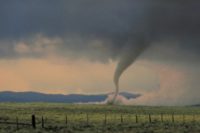Since 9/11-
We’re better prepared for public health emergencies

The U.S. has made considerable progress in its public health preparedness capability in the 16 years since the sixteen years after terrorist attacks at the World Trade Center in New York City, according to the American Journal of Public Health, which is releasing a special supplement on the subject.
A new study in this special supplement completed by the Centers for Disease Control and Prevention’s Office of Public Health Preparedness and Response found that in the 16 years since 9/11, the U.S. has made considerable progress in its public health preparedness capability.
The study evaluated awardees of the Public Health Emergency Preparedness program from 2001-2016, which provides funding to state, local and territorial governments to advance public health to prevent, protect, respond and rapidly recover from health emergencies. The research examined six domains of public health preparedness: biosurveillance, community resilience, countermeasures and mitigation, incident management, information management and surge management.
Researchers found that the number of jurisdictions, which included 50 states, 8 territories and 4 localities, able to carry out emergency countermeasures and mitigations has doubled since 2016. By 2016, all jurisdictions in the program reported 100 percent incident management infrastructure capability.
Other articles in the supplement examine emergency preparedness in the primary care system, preparedness funding, vaccination planning and other topics.
External funding for this supplement was supplied by the Centers for Disease Control and Prevention, Office of Public Health Preparedness and Response, Division of State and Local Readiness, Applied Science and Evaluation Branch.
Find a full list of AJPH papers released on September 11, 2017, at 4 p.m. EDT below:
- Progress in Public Health Emergency Preparedness United States, 2001-2016
- The Evolution of Public Health Emergency Management as a Field of Practice
- Promoting community preparedness and resilience: A Latino immigrant community-driven project following Hurricane Sandy
- Emergency Preparedness in the Workplace: The Flulapalooza Model for Mass Vaccination
- From Anthrax to Zika Fifteen Years of Public Health Emergency Preparedness
- Applying the 15 Public Health Emergency Preparedness Capabilities to Support Large Scale TB Investigations in Complex Congregate Settings
- Primary Care Emergency Preparedness Network, New York, 2015: Comparison of member and nonmember sites
- Funding Public Health Emergency Preparedness in the United States
- Public Health System Research in Public Health Emergency Preparedness (PHEP) in the U.S.A (2009-2015): Actionable Knowledge Base
- Improvements in State and Local Planning for Mass Dispensing of Medical Countermeasures: The Technical Assistance Review (TAR) Program United States, 2007-2014
- Project Public Health Ready (PPHR): History and Evolution of a Best Practice for Public Health Preparedness Planning
- Public Health Preparedness Funding: Key Programs and Trends from FY2001-FY2017
- A Conceptual Framework for the Evaluation of Emergency Risk Communications
- A Child's Health is the Public's Health: Progress and Gaps in Addressing Pediatric Needs in Public Health Emergencies
- Be Prepared
- Contents of the Volume - Evolution of Public Health Emergency Management from Preparedness to Response and Recovery
- How Health Department Contextual Factors Impact Public Health Preparedness (PHP) and Perceptions of the 15 PHP Capabilities
- An innovative resource for public health emergency management: Community Assessment for Public Health Emergency Response (CASPER) as an emergency management tool in the United States
- Pandemic Influenza Vaccination Planning among U.S. Public Health Emergency Preparedness Programs: Results from the 2015 Pandemic Influenza Readiness Assessment
- Science in Emergency Response at CDC: Structure and Functions
The articles above were published online Sept. 11, 2017, at 4 p.m. EDT by AJPH under “First Look.” “First Look” articles have undergone peer review, copyediting and approval by authors but have not yet been printed to paper or posted online by issue. AJPH is published by the American Public Health Association, and is available at www.ajph.org.
Looking for a reprint of this article?
From high-res PDFs to custom plaques, order your copy today!




